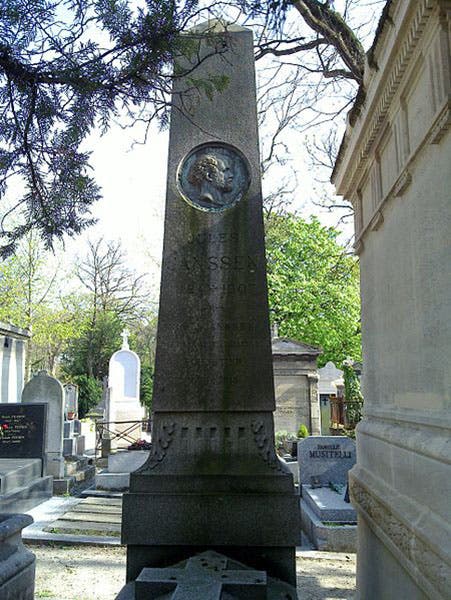Scientist of the Day - Jules Janssen
Pierre Jules César Janssen, a French astronomer, was born Feb. 22, 1824. Janssen is often a test case in discussions of what constitutes a scientific discovery. In August of 1868, Janssen was observing an eclipse of the Sun, focusing his attention on the spectral lines in the outer atmosphere of the Sun, or the chromosphere. The lines were so bright that he suspected that one ought to be able to observe solar spectral lines without an eclipse, and this turned out to be the case. Two months later, on Oct. 19, 1868, Janssen was observing the chromosphere using his new methods, and he noticed a new yellow line in the spectrum of the sun. Two yellow lines, very close together, had been observed long before by Josef Fraunhofer; they were collectively called the D line, or sometimes D1 and D2. They were known to indicate the presence of sodium in the sun. We see below the spectrum of sodium, with its double yellow lines (second image).
But the third line, a little distant from the bright sodium pair, was a new discovery by Janssen. One day later, an Englishman, Norman Lockyer, observed the same anomalous yellow line, and he communicated this discovery to the French Academy of Science on Oct. 26, 1868. Interestingly, Janssen's paper on new methods of observing solar lines was read to the Academy on the same day, but he did not mention the third yellow line. Lockyer called the new line D3; at one point, he proposed that it might represent a new element in the sun, and he and a chemist, Edward Frankland, named the new element helium, after Helios, the Sun. However, on other occasions, Lockyer suggested that it might just be a third sodium line that had not yet been noticed on Earth.
Twenty-seven years later, in 1895, William Ramsay, treating a mineral with an acid in order to release argon, found that the spectrum of the gas produced had a bright yellow line, precisely where Janssen and Lockyer had first seen it in the solar spectrum (third image). Ramsay had isolated the gas helium right here on Earth. So who discovered helium? Janssen, who spotted the line first? Lockyer, who spotted it second but announced it first? Or Ramsay, who actually isolated the gas and held a flask of it in his hands? There is no right answer to the question, so you are welcome to your opinion, although whatever your choice, you are allowed to be amazed that an element was observed in the Sun before it was ever identified on Earth.
Janssen went on to a career as Director of the Meudon Observatory in France from 1875 to 1907. There he undertook a series of photographs of the Sun, published in 1904 as Atlas de photographies solaires. This work ought to be in our collections, but is not. At least, not yet. In 1884, Janssen was France's delegate to the International Meridian Conference in Washington, D.C., where he was unable to convince anyone that the Prime Meridian should run through the Paris Observatory, or, alternatively, the westernmost Canary Island. Janssen died in 1907 and was buried in Pere Lachaise Cemetery in Paris (fourth image). Nine of our former Scientists of the Day are buried there, including George Méliès and Sophie Germain, giving it perhaps the highest density of deceased scientists per acre of any place in the world. Dr. William B. Ashworth, Jr., Consultant for the History of Science, Linda Hall Library and Associate Professor, Department of History, University of Missouri-Kansas City. Comments or corrections are welcome; please direct to ashworthw@umkc.edu.









